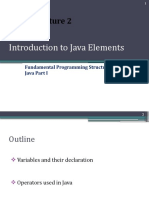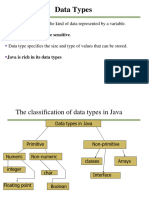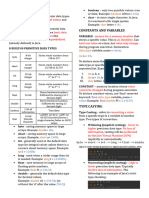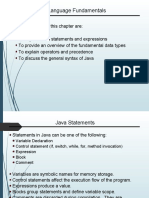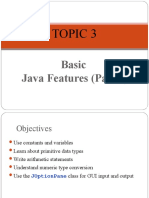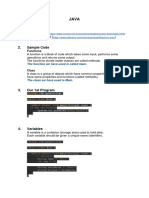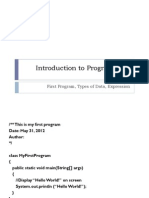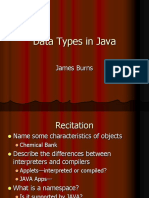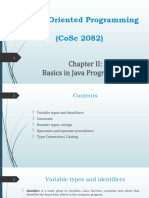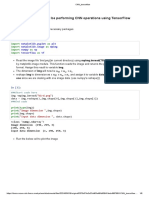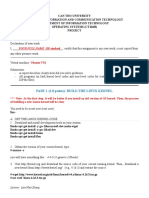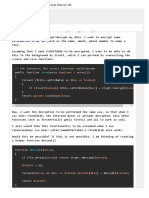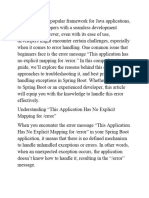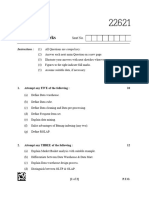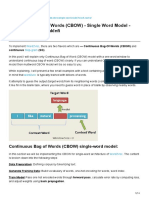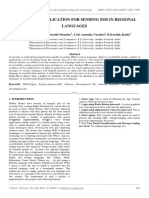0% found this document useful (0 votes)
73 views39 pagesDay 3 - Object Oriented Programming
This document discusses fundamental programming structures in Java. It covers basic Java program structure, variables and primitive data types, operators, and the main method. It defines classes, access modifiers, and naming conventions. It also discusses variable declaration and naming, the 8 primitive data types including integer, floating point, boolean, and character types. The document outlines arithmetic, assignment, increment/decrement, relational, and conditional operators. It also covers constants, strings, comments, and the order of operations.
Uploaded by
yosefCopyright
© © All Rights Reserved
We take content rights seriously. If you suspect this is your content, claim it here.
Available Formats
Download as PPTX, PDF, TXT or read online on Scribd
0% found this document useful (0 votes)
73 views39 pagesDay 3 - Object Oriented Programming
This document discusses fundamental programming structures in Java. It covers basic Java program structure, variables and primitive data types, operators, and the main method. It defines classes, access modifiers, and naming conventions. It also discusses variable declaration and naming, the 8 primitive data types including integer, floating point, boolean, and character types. The document outlines arithmetic, assignment, increment/decrement, relational, and conditional operators. It also covers constants, strings, comments, and the order of operations.
Uploaded by
yosefCopyright
© © All Rights Reserved
We take content rights seriously. If you suspect this is your content, claim it here.
Available Formats
Download as PPTX, PDF, TXT or read online on Scribd
/ 39
